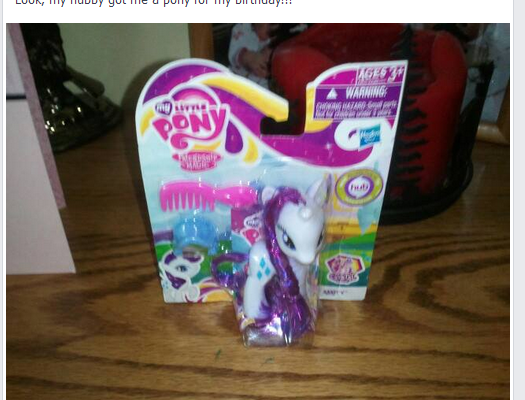Please email me at:
Or use the form below.
[contact-form 1 “Contact form 1”]
The no-pants guide to spending, saving, and thriving in the real world.

In the past, I’ve gone through a detailed series of budget lessons demonstrating how to make a budget and showing my personal budget spreadsheet template. If you weren’t here to see them develop, you probably haven’t seen them at all. I’ve never built an actual index for those posts.
This is the master index of my budget planning resources. As I develop more, this will grow.
Budget Lesson #1 – In this lesson, I go over how we handle discretionary income and I explain our modified envelope system. The discretionary budget contains things like our grocery bill, or the clothes we buy. We have near-total discretion over what is purchased, hence the name.
Budget Lesson #2 – Lesson #2 contains the details of our monthly bills. These are the ones that are consistent, predictable, and actually due each month. Most people take these for granted as the bills they have to pay, but it’s not true. You can get almost all of your regular bills reduced just by asking. You would also be surprised what you can do without, when properly motivated.
Budget Lesson #3 – This is where I explain how we deal with the non-monthly bills. That is, the bills that have to be paid, but are not due on a monthly basis. I also share the personal budget spreadsheet template I developed. I am working on a few sample templates to match various imaginary scenarios. If you’d like to be an anonymous case study, and get free help setting up a budget, let me know, please.
Budget Lesson #4 – In this lesson, I describe our “set-aside” funds for things that will need to be paid eventually, but not on a set schedule. Sometimes, they are never actually due. We set aside money for the parties we throw, for car repairs and for a number of other things. A few of these items are outright optional, but they are part of what makes life fun. You can’t make a budget without including some of the extras.
Budget Lesson #5 – This is the companion piece to lesson 2. Learn how I’ve reduced–or attempted to reduce–each of these bills. For the better part of two years, I called Dish Network every few months to ask for a discount. For almost 2 years, it was granted. Then one, day, they told me they were putting a note on our account to keep us from getting any more discounts, so I canceled. 100% discounts help us save more.
Budget Lesson #6 – This is the reduction companion to lesson 3. These bills are harder to reduce. Have you ever successfully gotten your property taxes lowered?
Budget Lesson #7 – This is the reduction companion to lesson 4. Notice a pattern, yet?
Budget Lesson #8 – Here, completely out of order, is the reduction companion to lesson 1. Watch as I magically reduce–or rationalize–our discretionary budget.
So, dear readers, what part of budgeting should I address next?

For the past couple of years, my daughters have been riding in horse shows with a local saddle club. We’ve been lucky in that my wife’s cousin has let us borrow her horse for the shows, so costs have been minimal.
Unfortunately, that horse isn’t available this year. We knew that a few months ago, so the plan was to take a year off from the shows and focus on lessons, to get the girls some real skills. We found a great instructor at a stable about 30 miles from our house. Since we live less than two miles from the border of the biggest city in the state, that’s a comparatively short drive.
We pay her $200 per month for 1 lesson per week for both girls. They each get 30-45 minutes on the horse during each lesson.
Now that show season has started, the plan seems to have changed. The girls will be riding a different borrowed pony tomorrow. The shows cost about $50 for registration, lunch, and gas. Our club has 1 show per month, but my wife has assured me they’ll only be hitting three shows this season and limiting the number of events to keep the cost down.
The direct costs aren’t too bad, but there’s a problem with keeping-up-with-the-Joneses accessorizing. Vests and boots and helmets and belts and shirts, oh my.
I’d guess our costs for the summer will be $300 per month.
One thing we’ve been considering is buying a pony. We can get an older pony for around $500-1000. Older is good because they are calmer and slower. Boarding the thing will cost another $200 per month. We’ve been slowly accumulating the stuff to own a horse, so I’m guessing the “OMG, he let me buy a horse, now I need X” shopping bill will come to around $1500, but I’ll figure $2000 to be safe. We already have a trailer, a saddle, blankets, buddy-straps, combs, brushes, buckets, rakes, shovels, and I-bought-this-but-I-will-just-put-it-in-the-pile-of-horse-stuff-so-Jason-will-never-notice stuff. We’re certainly close to being ready to buy.
(FYI: If you’re starting from scratch, don’t think you’re going to get into horse ownership for less than $10,000 the first year, and that’s being a very efficient price-shopper.)
So we’re looking at $5400 for a horse, gear, and boarding the first year. If we cancel the lessons, by spring we’d have $2000 of that saved and most of the rest can be bought over time.
On the other hand, if we go that route, we’ll never save enough to buy the hobby farm we’re looking for.
Decisions, decisions. I should just buy a new motorcycle. Within a year, I win financially.
Today, I am continuing the series, Money Problems: 30 Days to Perfect Finances. The series will consist of 30 things you can do in one setting to perfect your finances. It’s not a system to magically make your debt disappear. Instead, it is a path to understanding where you are, where you want to be, and–most importantly–how to bridge the gap.
I’m not running the series in 30 consecutive days. That’s not my schedule. Also, I think that talking about the same thing for 30 days straight will bore both of us. Instead, it will run roughly once a week. To make sure you don’t miss a post, please take a moment to subscribe, either by email or rss.
Today we’re going to look at ways to boost your income.
People spend a lot of time talking about ways to reduce your expenses, but there is a better way to make ends meet. If you make more money, you will—naturally—have more money to work with, which will make it easier to balance your expenses. I’ve found it to be far less painful to make more money than to cut expenses I enjoy.
I can hear what you’re thinking. It’s easy to tell people to make more money, but what about telling them how? Guess what? I’m going to tell you how to make money because I rock.
By far, the simplest way to make more money is to convince whoever is paying you to pay you more for what you are already doing. In other words, get a raise. I know that’s easy to say. Money’s tight for a lot of companies and layoffs are common. None of that matters. Your company knows that hiring someone new will involve a lot of downtime during training. If you’ve been visibly doing your job, and the company isn’t on the brink of failure, it should be possible to get a bit of the budget tossed your way.
Another simple idea is to get a second job. Personally, I hate this idea, but it works wonders for some people. Gas stations and pizza stores offer flexible schedules and they are always hiring. If they aren’t willing to work with your schedule, or it doesn’t work out, you can always quit. This isn’t your main income, after all.
My favorite option is to create a new income stream. What can you do?
Take a piece of paper and a close friend and brainstorm how you can make some money. Write down every type of activity you have ever done or ever wanted to do. Then write down everything you can think of that other people who do those activities need or want. Remember, during a brainstorming session, there are no stupid ideas. Take those two lists and see if there is any product or service you can provide.
You can start a blog—although don’t expect to generate much money early—or try writing for some revenue-sharing article web sites, like hubpages or squidoo. Other options include affiliate marketing, garage sale arbitrage(buying “junk” at garage sales, fixing it up and selling it), or even doing yard work for other people.
One interesting business I’ve seen lately is a traveling poop-scooper. These people travel around and scoop poop out of ddog-owners’ yards. Business booms in the spring when the snow melts, but it can be an ongoing income, since dogs don’t stop pooping.
Raising your income can make it easier to pay your bills, pay off your debt, or even taking nice vacations. How have you made some extra cash?
I just noticed this didn’t post on time.
There are a few ways to get more out of this site.
Live Real, Now by email. You get a choice between having all of the posts delivered to your inbox, or just occasional updates and deals. Both options get my Budget Lessons, free of charge.
RSS subscription. You can have every post delivered to your favorite newsreader.
Twitter. I’m @LiveRealNow. You can get my snark and pseudo-wisdom 140 characters at a time. Ooh!
Facebook. Everybody has a fan page, right?
Now, for the part you’ve all been waiting for…
This week’s roundup:
It’s time to buy school supplies again. Don’t let it break the bank.
Chewbacca on a squirrel, fighting Nazis.
A pizza peel with a conveyor belt. The pinnacle of pizza-making awesomeness.
Have you ever looked into the psychology of a restaurant menu?
Carnivals I’ve participated in:
Carnival of Personal Finance #267 at Beating Broke posted A Budget Isn’t Enough.
Wealth Informatics hosted the Festival of Frugality and posted Payday Loans Suck.
Canajun Finances hosted the Best of Money Carnival and posted Life Altering Lessons I Learned From My Debt.
Today, I continuing the series, Money Problems: 30 Days to Perfect Finances. The series will consist of 30 things you can do in one setting to perfect your finances. It’s not a system to magically make your debt disappear. Instead, it is a path to understanding where you are, where you want to be, and–most importantly–how to bridge the gap.
I’m not running the series in 30 consecutive days. That’s not my schedule. Also, I think that talking about the same thing for 30 days straight will bore both of us. Instead, it will run roughly once a week. To make sure you don’t miss a post, please take a moment to subscribe, either by email or rss.
On this, day 2 of the series, you need to gather all of your bills: your electric bill, your mortgage, the rent for your storage unit, everything. Don’t miss any.
Go ahead, grab them now. I’ll wait.
Did you remember that thing that comes in the plain brown wrapper every month? You know, that thing you always hope your neighbors won’t notice?
Now, you’re going to sort all of the bills into 5 piles.
Pile #1: These are your monthly bills. This will probably be your biggest pile, since most bills are organized to get paid monthly. this will include your credit cards, mortgage(do you rent or buy?), most utilities and your cellphone.
Pile #2: Weekly expenses. When I look at my actual weekly bills, it’s a small stack. Just daycare. However, there are a lot of other expenses to consider. This stack should include your grocery bill, gas for your car, and anything else you spend money on each week.
Pile #3: Quarterly and semiannual bills. I’ve combined these because there generally aren’t enough bills to warrant two piles. My only semi-annual bill is my property tax payment. Quarterly bills could include water & sewer, maybe a life insurance policy and some memberships.
Pile #4: Annual bills. This probably won’t be a large pile. It will usually include just some memberships and subscriptions.
Pile #5: Irregular bills. The are some things that just don’t come due regularly. In our house, school lunches and car repairs fall into this category. We don’t have car problems often, but we set money aside each month so our budget doesn’t get flushed down the drain if something does come up.
Now that you have all of your expenses together, you know what your are on the hook for. Next time, we’ll address income.